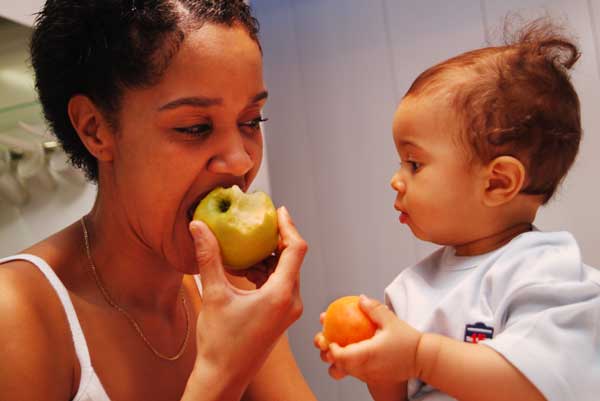Many parents have a difficult time persuading their preschool-aged children to try vegetables, let alone eat them regularly. Food and nutrition researchers have found that by offering a dip flavored with spices, children were more likely to try vegetables — including those they had previously rejected.
“Less than 10 percent of 4- to 8-year-olds consume the USDA (U.S. Department of Agriculture) recommended daily servings of vegetables,” said Jennifer S. Savage, associate director of the Center for Childhood Obesity Research at Penn State. “Even more striking is that over one-third of children consume no servings of vegetables on a typical day. We wanted to figure out a way to increase vegetable consumption.”
According to ChooseMyPlate, a USDA initiative, children between the ages of three and five should be eating one and a half to two cups of vegetables every day. Vegetables provide fiber and necessary nutrients. They can also replace less healthy food choices and combat obesity because they are less calorie-dense.
Savage and colleagues found that children were three times more likely to refuse eating a vegetable alone than they were to eat the same vegetable when paired with a reduced-fat flavored dip. And the children were twice as likely to reject a vegetable with no dip than they were if given the same vegetable with plain dip.
The researchers report in a recent issue of the Journal of the Academy of Nutrition and Dietetics that they worked with 34 children between the ages of 3 and 5 to determine each child’s familiarity with vegetables and which were liked or disliked. The children were then reintroduced to the same vegetables, this time with a dip, and each child’s likes and dislikes were reevaluated.
“Repeated exposure is a way to get kids to like new foods,” said Savage. “This has been demonstrated in previous studies. But first you have to get them to taste the vegetable. Plus, the servings do not need to be huge — the key may be to start by offering really small portions.”
In as few as four tasting sessions, Savage and colleagues found that preschoolers consumed more of a disliked vegetable when it was paired with a dip flavored with spices than when it was eaten alone.
The children tasted and rated six different vegetables: carrots, cucumbers, celery, green beans, red peppers and yellow squash. After tasting each vegetable, the children were shown three cartoon faces and asked to pick which one best showed how they felt. Their choices were “yummy,” “just okay” and “yucky.” The researcher also noted if the child refused to try the sample. In the next session the children were introduced to five different Miracle Whip-based reduced-fat dips, one plain and the other four flavored with different combinations of spices. The most well-liked dips were flavored “pizza” and “ranch;” the least-liked dips were “herb” and “garlic.”
After the initial tastings and ratings, the preschoolers were given veggies and dip together. Thirty-one percent of them deemed a vegetable alone to be “yummy,” but when paired with a flavored dip 64 percent of the children found the vegetable “yummy.” On the other end of the spectrum, 18 percent of children refused to eat a vegetable by itself, while only six percent would refuse to eat a vegetable when paired with a flavored dip.
In the last part of this study the researchers offered the preschoolers celery and yellow squash, paired with a preferred flavored dip. These vegetables were chosen because they were the least liked of the six tested. The children were offered celery one day and squash on a different day. As expected, overall, the children ate more of each veggie when paired with a dip than when it was served alone.
The amount of squash eaten by the preschoolers more than doubled when paired with a flavored dip. The quantity of celery eaten increased 62 percent when paired with a flavored dip.
“Just because a child refuses to taste a vegetable doesn’t mean they don’t like it,” Savage said. “It’s foreign — the key is to try to get them to taste it in a positive light.”
Source Penn State



 (1 votes, average: 4.00 out of 5)
(1 votes, average: 4.00 out of 5) 






